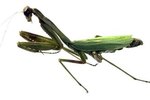
Bearded dragons (Pogona vitticeps) belong to a small group of reptiles that seem to enjoy the affections of a human companion. These bearded lizards perform a courtship ritual that is similar to many other wild animals. In captivity, you might find this behavior amusing, as it involves certain "dance moves" and shows of affection.
In the Wild
Wild bearded dragons become sexually mature when they're between 1 and 2 years old. Mating takes place during the summer months, between September and March in their native Australia. In captivity, many breeders offer a brumation period to the dragons prior to mating, although it's not always necessary. Brumation is similar to hibernation, although the dragon's body doesn't go through as extreme changes. The brumation period is offered to somewhat mimic winter. The mating cycle involves territorial males and intricate mating dances between males and females. Once gravid, a female will search for an acceptable site to lay and bury her eggs.
The Dance
During courtship, males and females will perform a dance of sorts, signaling to each other their acceptance. In captivity, a female who is unwilling or unready to mate will try to escape the male, often by clawing at the sides of the enclosure. A willing female, however, will perform the dance with her prospective mate. The male will bob his head rather ferociously and display his beard, which often darkens in color. A submissive female will respond with slower head bobs, and in many cases will perform the submissive "arm wave," a gesture used by both males and females to show submission.
Copulation and Gravidity
The dance may be the longest part of the courtship cycle, as actual copulation can take less than one minute. Once the mates have accepted each other, the male will quickly mount the female's back, oftentimes biting her on the fleshy part of her neck. The two intertwine their tails and copulation takes place. The female can reside with the male until she shows signs of needing to lay her eggs. Females generally lay their eggs three to five weeks after successful copulation.
Egg Laying
Place the gravid female in an enclosure by herself with a suitable medium for egg laying. Female beardies bury their eggs in a moist soil in the wild; a moist, but not wet, mix of soil and vermiculite, or vermiculite and water makes a suitable medium for egg laying in captivity. Once the eggs are laid in captivity, they need an incubator box with the same medium used for egg laying. The temperature should remain in the mid-80s for successful incubation. The incubation period is approximately six to 12 weeks.
References
Photo Credits
-
BananaStock/BananaStock/Getty Images
Writer Bio
With a professional background in gardening, landscapes, pests and natural ecosystems, Jasey Kelly has been sharing her knowledge through writing since 2009 and has served as an expert writer in these fields. Kelly's background also includes childcare, and animal rescue and care.



